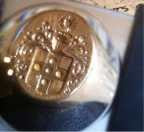Making the Invisible, Visible
What happens to air quality when you put a lid on an urban area? My son and his wife live in the Wasatch Range area of Logan, Utah which is 90 minutes north of Salt Lake City and their community is effected by the phenomena described in this piece in the New York Times.
Here is a quote from the article:
I have a brother and sister-in-law in Park City who, in a matter of speaking, live 'above it all.' I suppose it becomes like a man- made Smokey Mountains from their point of view.
This situation makes the invisible, visible. We would not last long in an urban bubble. We depend on the rest of the planet to filter and dilute the pollution we create. Most of the time this 'reality' is not visible, but here it is. Another call to mindfulness and action to minimize our impact on the environment.
Here is a quote from the article:
The air pollution has gotten so bad at times that it has prompted warnings from local doctors, spawned protests at the State Capitol and led to a variety of legislative proposals in the hopes of confronting the problem before it gets worse.
It is not that the region necessarily emits more pollution than other large metropolitan areas, or that the problem is especially new, Mr. Bird said. What makes the situation here different is the confluence of topographic and meteorological factors.
When heavy winter storms sweep through the area, they leave snow on the Salt Lake Valley floor. But intermittent warm fronts trap the cold air, creating the effect of a lid on a soup bowl and keeping dirty air from car emissions and other pollutants from escaping.
 |
| Scott G Winterton/Deseret News |
This situation makes the invisible, visible. We would not last long in an urban bubble. We depend on the rest of the planet to filter and dilute the pollution we create. Most of the time this 'reality' is not visible, but here it is. Another call to mindfulness and action to minimize our impact on the environment.


<< Home